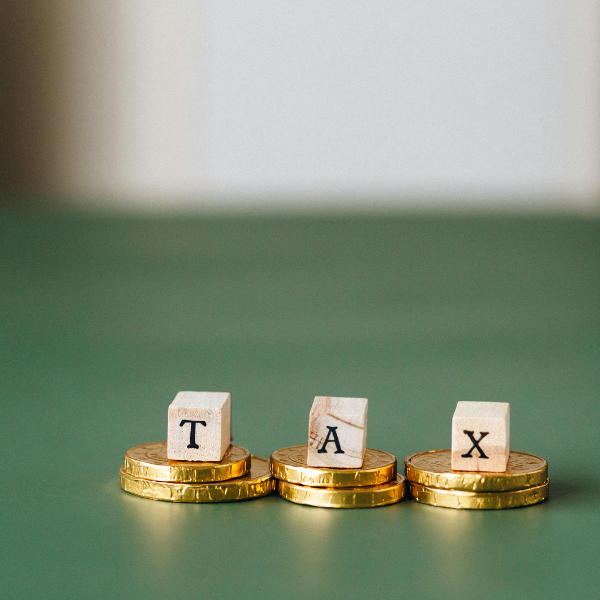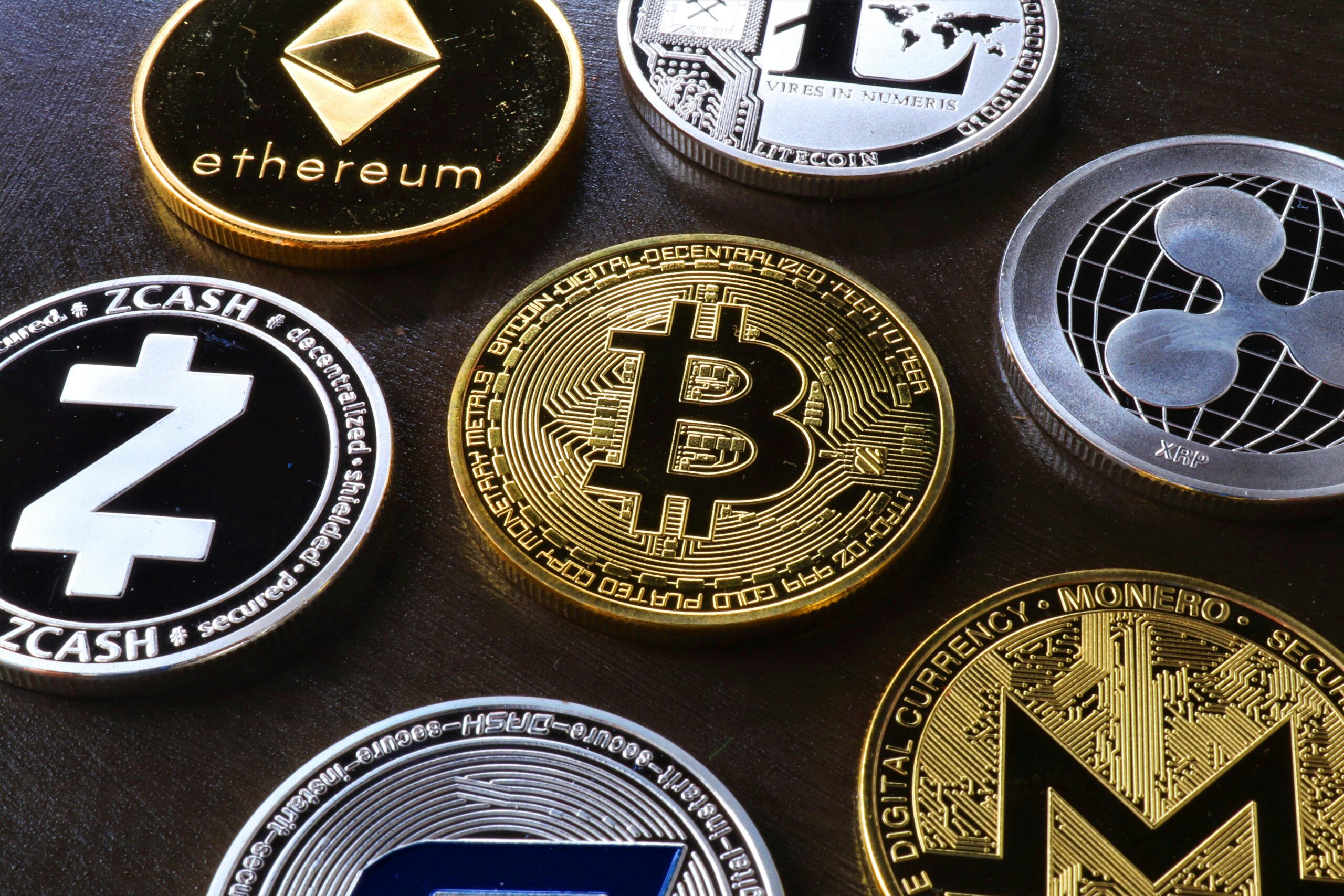
Table of Contents
Introduction
In the ever-fluctuating landscape of global economics, gold has long been a stalwart investment option. As the world evolves, so too do predictions for the future price of this precious metal. In this article, we’ll delve into future gold price predictions, focusing on top countries and various karat varieties. Whether you’re a seasoned investor or someone considering gold as part of your portfolio, understanding these forecasts can provide valuable insights.
Understanding Gold Prices:
Before delving into future gold price predictions it’s crucial to understand the factors that influence gold prices. Gold prices are affected by a myriad of factors, including economic indicators, geopolitical tensions, inflation rates, currency values, and demand-supply dynamics. Additionally, gold has historically been considered a safe-haven asset, meaning its value tends to rise during times of economic uncertainty or market volatility.
Future Gold Price Predictions:
- United States: The United States, as the world’s largest economy, plays a significant role in shaping global gold prices. Analysts predict that future gold prices in the US will continue to be influenced by economic indicators such as GDP growth, employment rates, and inflation. With ongoing debates surrounding fiscal policies and monetary stimulus measures, investors are closely monitoring these factors for clues about future gold price movements. Additionally, geopolitical tensions and the US dollar’s performance on the international stage will also impact gold prices in the coming years.
- China: China, the world’s largest consumer of gold, is another key player in the global gold market. As China’s economy continues to expand and its middle class grows, demand for gold is expected to remain robust. Analysts predict that future gold prices in China will be driven by factors such as consumer sentiment, government policies, and international trade dynamics. Additionally, China’s role as a major gold producer and importer further adds to its influence on global prices.
- India: India has a deep cultural affinity for gold, with the metal playing a significant role in weddings, festivals, and religious ceremonies. As one of the world’s largest consumers of gold, India’s demand heavily impacts global prices. Future gold prices in India will be influenced by factors such as consumer demand, government regulations, and currency fluctuations. Additionally, India’s gold import policies and efforts to curb smuggling will also impact prices in the coming years.
- European Union: The European Union (EU) comprises several countries with diverse economic landscapes, each contributing to the region’s overall gold demand. Future gold price in the EU will be shaped by factors such as economic growth, monetary policies set by the European Central Bank, and geopolitical developments within the region. With Brexit uncertainties and ongoing debates about the EU’s economic future gold price, investors are closely monitoring these factors for potential impacts on gold prices.
- Emerging Markets: Emerging markets such as Brazil, Russia, and South Africa play increasingly significant roles in the global gold market. As these economies continue to grow, so too does their demand for gold as an investment and jewelry. Future gold price in emerging markets will be influenced by a combination of local economic factors, government policies, and global market trends. Additionally, currency devaluations and inflationary pressures in these countries can also drive demand for gold as a hedge against economic instability.
Karat Varieties and Price Trends:
In addition to geographical considerations, the price of gold also varies based on its purity, commonly measured in karats. Karat is a unit of measurement that represents the purity of gold, with 24 karats being pure gold. As the karat value decreases, the gold becomes less pure, typically mixed with other metals for added strength and durability. Common karat varieties include 24k, 22k, 18k, and 14k, each with its own price tag and market demand.
- 24 Karat Gold:
Considered the purest form of gold, 24k gold commands the highest price due to its high purity level. While it is highly sought after for investment purposes, it is less commonly used in jewelry due to its softness and susceptibility to damage. - 22 Karat Gold:
Slightly less pure than 24k gold, 22k gold is a popular choice for jewelry making due to its balance of purity and durability. It retains a significant value in the market, making it a preferred choice for both investors and consumers. - 18 Karat Gold:
With a lower purity level than 22k gold, 18k gold is often used in high-end jewelry and luxury goods. While it is less pure, it offers greater durability and is less prone to tarnishing, making it a popular choice among consumers seeking quality craftsmanship. - 14 Karat Gold:
As the least pure of the common karat varieties, 14k gold is often alloyed with other metals such as copper or silver to increase its strength and hardness. While it is more affordable than higher karat options, it still retains significant value and is widely used in mainstream jewelry designs.
Price trends for different karat varieties can vary based on factors such as market demand, purity levels, and manufacturing costs. In general, higher karat gold commands a premium price due to its purity, while lower karat options offer a more affordable alternative without sacrificing quality.
Here’s a table summarizing the historical prices of gold over the past 30 years, including different karat varieties:
The Past 30 Years Gold Price in U.S Dollar :
| Year | Gold Price (per ounce) | 24k Gold Price (per gram) | 22k Gold Price (per gram) | 18k Gold Price (per gram) | 14k Gold Price (per gram) |
|---|---|---|---|---|---|
| 1994 | $383.25 | $12.31 | $11.28 | $9.23 | $7.20 |
| 1995 | $387.00 | $12.44 | $11.40 | $9.33 | $7.28 |
| 1996 | $387.80 | $12.47 | $11.43 | $9.35 | $7.31 |
| 1997 | $288.40 | $9.27 | $8.48 | $6.94 | $5.42 |
| 1998 | $291.25 | $9.37 | $8.57 | $7.01 | $5.47 |
| 1999 | $278.90 | $8.97 | $8.21 | $6.72 | $5.25 |
| 2000 | $279.11 | $8.98 | $8.22 | $6.73 | $5.26 |
| 2001 | $276.50 | $8.90 | $8.14 | $6.66 | $5.20 |
| 2002 | $310.30 | $9.97 | $9.12 | $7.46 | $5.83 |
| 2003 | $363.40 | $11.68 | $10.70 | $8.76 | $6.84 |
| 2004 | $409.75 | $13.16 | $12.05 | $9.87 | $7.72 |
| 2005 | $444.74 | $14.29 | $13.08 | $10.71 | $8.37 |
| 2006 | $603.45 | $19.40 | $17.80 | $14.57 | $11.38 |
| 2007 | $696.83 | $22.39 | $20.53 | $16.82 | $13.13 |
| 2008 | $871.96 | $28.02 | $25.67 | $21.03 | $16.42 |
| 2009 | $973.67 | $31.31 | $28.68 | $23.49 | $18.36 |
| 2010 | $1,224.53 | $39.38 | $36.08 | $29.59 | $23.14 |
| 2011 | $1,571.52 | $50.53 | $46.29 | $37.95 | $29.67 |
| 2012 | $1,669.88 | $53.66 | $49.21 | $40.33 | $31.53 |
| 2013 | $1,411.23 | $45.38 | $41.63 | $34.13 | $26.67 |
| 2014 | $1,266.06 | $40.70 | $37.31 | $30.61 | $23.93 |
| 2015 | $1,160.39 | $37.30 | $34.21 | $28.06 | $21.91 |
| 2016 | $1,251.22 | $40.19 | $36.85 | $30.24 | $23.63 |
| 2017 | $1,257.64 | $40.39 | $37.05 | $30.36 | $23.74 |
| 2018 | $1,268.49 | $40.74 | $37.39 | $30.66 | $23.98 |
| 2019 | $1,393.34 | $44.79 | $41.09 | $33.71 | $26.33 |
| 2020 | $1,769.85 | $56.90 | $52.21 | $42.78 | $33.41 |
| 2021 | $1,808.30 | $58.09 | $53.31 | $43.69 | $34.13 |
| 2022 | $1,763.73 | $56.70 | $51.99 | $42.66 | $33.35 |
| 2023 | $1,865.49 | $59.97 | $55.04 | $45.17 | $35.31 |
The Past 30 Years Gold Price in Chinese Yuan :
Here’s the same table with gold prices converted into Chinese Yuan (CNY) for your blog:
| Year | Gold Price (per ounce) | 24k Gold Price (per gram) | 22k Gold Price (per gram) | 18k Gold Price (per gram) | 14k Gold Price (per gram) |
|---|---|---|---|---|---|
| 1994 | ¥2,515.77 | ¥81.02 | ¥74.15 | ¥60.72 | ¥47.35 |
| 1995 | ¥2,543.50 | ¥81.81 | ¥75.00 | ¥61.41 | ¥47.93 |
| 1996 | ¥2,547.47 | ¥81.95 | ¥75.13 | ¥61.51 | ¥48.00 |
| 1997 | ¥1,890.32 | ¥60.69 | ¥55.57 | ¥45.54 | ¥35.53 |
| 1998 | ¥1,908.53 | ¥61.26 | ¥56.14 | ¥46.02 | ¥35.93 |
| 1999 | ¥1,824.20 | ¥58.64 | ¥53.76 | ¥44.02 | ¥34.42 |
| 2000 | ¥1,824.64 | ¥58.66 | ¥53.78 | ¥44.03 | ¥34.43 |
| 2001 | ¥1,808.61 | ¥58.16 | ¥53.32 | ¥43.69 | ¥34.11 |
| 2002 | ¥2,026.93 | ¥65.09 | ¥59.72 | ¥48.93 | ¥38.24 |
| 2003 | ¥2,377.12 | ¥76.44 | ¥70.04 | ¥57.42 | ¥44.89 |
| 2004 | ¥2,681.50 | ¥86.10 | ¥78.91 | ¥64.72 | ¥50.63 |
| 2005 | ¥2,913.87 | ¥93.72 | ¥85.96 | ¥70.42 | ¥55.07 |
| 2006 | ¥3,955.83 | ¥127.29 | ¥116.60 | ¥95.52 | ¥74.65 |
| 2007 | ¥4,573.88 | ¥147.03 | ¥134.78 | ¥110.45 | ¥86.29 |
| 2008 | ¥5,714.36 | ¥183.55 | ¥168.19 | ¥137.99 | ¥107.77 |
| 2009 | ¥6,375.94 | ¥204.78 | ¥187.65 | ¥153.79 | ¥120.10 |
| 2010 | ¥7,986.15 | ¥256.54 | ¥235.20 | ¥192.85 | ¥150.89 |
| 2011 | ¥10,264.61 | ¥329.70 | ¥302.92 | ¥248.11 | ¥193.89 |
| 2012 | ¥10,854.33 | ¥348.62 | ¥320.23 | ¥262.06 | ¥204.85 |
| 2013 | ¥9,178.61 | ¥294.89 | ¥270.65 | ¥221.99 | ¥173.51 |
| 2014 | ¥8,250.52 | ¥265.05 | ¥243.17 | ¥199.70 | ¥156.20 |
| 2015 | ¥7,570.65 | ¥243.14 | ¥223.22 | ¥182.93 | ¥142.77 |
| 2016 | ¥8,135.02 | ¥261.31 | ¥239.93 | ¥196.57 | ¥153.47 |
| 2017 | ¥8,186.34 | ¥263.18 | ¥241.51 | ¥198.05 | ¥154.65 |
| 2018 | ¥8,295.26 | ¥266.48 | ¥244.35 | ¥200.32 | ¥156.76 |
| 2019 | ¥9,075.33 | ¥291.41 | ¥267.49 | ¥219.27 | ¥171.40 |
| 2020 | ¥11,531.15 | ¥370.89 | ¥340.39 | ¥278.97 | ¥217.97 |
| 2021 | ¥11,784.34 | ¥378.28 | ¥347.45 | ¥285.16 | ¥222.90 |
| 2022 | ¥11,451.38 | ¥367.71 | ¥337.53 | ¥276.96 | ¥216.41 |
| 2023 | ¥12,082.28 | ¥388.08 | ¥356.74 | ¥292.61 | ¥228.53 |
These prices are approximate and for informational purposes only. Actual prices may vary based on market conditions and currency exchange rates.
The Past 30 Years Gold Price in Indian Rupees :
Here’s the same table with gold prices converted into Indian Rupees (INR) for your blog:
| Year | Gold Price (per ounce) | 24k Gold Price (per gram) | 22k Gold Price (per gram) | 18k Gold Price (per gram) | 14k Gold Price (per gram) |
|---|---|---|---|---|---|
| 1994 | ₹9,285.08 | ₹298.55 | ₹273.95 | ₹224.13 | ₹175.02 |
| 1995 | ₹9,363.45 | ₹301.03 | ₹276.33 | ₹226.47 | ₹176.95 |
| 1996 | ₹9,379.80 | ₹301.58 | ₹276.83 | ₹226.84 | ₹177.24 |
| 1997 | ₹6,968.14 | ₹223.98 | ₹205.43 | ₹168.14 | ₹131.35 |
| 1998 | ₹7,021.94 | ₹225.58 | ₹206.89 | ₹169.63 | ₹132.68 |
| 1999 | ₹6,721.02 | ₹215.84 | ₹197.90 | ₹162.11 | ₹126.61 |
| 2000 | ₹6,721.91 | ₹215.87 | ₹197.93 | ₹162.13 | ₹126.63 |
| 2001 | ₹6,654.94 | ₹213.60 | ₹195.98 | ₹160.58 | ₹125.57 |
| 2002 | ₹7,447.20 | ₹239.20 | ₹219.54 | ₹179.74 | ₹140.53 |
| 2003 | ₹8,742.54 | ₹281.16 | ₹258.19 | ₹211.69 | ₹165.42 |
| 2004 | ₹9,858.81 | ₹317.08 | ₹291.24 | ₹238.71 | ₹186.47 |
| 2005 | ₹10,710.28 | ₹344.09 | ₹316.07 | ₹258.77 | ₹202.13 |
| 2006 | ₹14,482.25 | ₹465.35 | ₹427.01 | ₹349.66 | ₹273.03 |
| 2007 | ₹16,750.87 | ₹538.41 | ₹493.84 | ₹404.61 | ₹316.18 |
| 2008 | ₹20,912.29 | ₹671.56 | ₹616.87 | ₹505.64 | ₹394.98 |
| 2009 | ₹23,269.19 | ₹748.46 | ₹687.14 | ₹563.39 | ₹440.61 |
| 2010 | ₹29,184.18 | ₹938.34 | ₹861.37 | ₹706.11 | ₹551.97 |
| 2011 | ₹37,572.78 | ₹1,207.55 | ₹1,108.51 | ₹908.45 | ₹709.53 |
| 2012 | ₹39,739.42 | ₹1,276.78 | ₹1,173.01 | ₹961.72 | ₹751.33 |
| 2013 | ₹33,556.17 | ₹1,078.23 | ₹991.42 | ₹812.04 | ₹634.39 |
| 2014 | ₹30,186.25 | ₹971.38 | ₹892.46 | ₹731.82 | ₹571.61 |
| 2015 | ₹27,688.59 | ₹890.57 | ₹818.10 | ₹670.44 | ₹523.55 |
| 2016 | ₹29,690.70 | ₹953.36 | ₹877.19 | ₹718.80 | ₹561.29 |
| 2017 | ₹29,852.67 | ₹958.95 | ₹882.18 | ₹722.28 | ₹564.14 |
| 2018 | ₹30,171.44 | ₹969.58 | ₹891.25 | ₹730.90 | ₹570.86 |
| 2019 | ₹33,014.42 | ₹1,060.67 | ₹974.66 | ₹798.68 | ₹623.89 |
| 2020 | ₹41,796.86 | ₹1,342.14 | ₹1,232.37 | ₹1,010.40 | ₹788.76 |
| 2021 | ₹42,714.98 | ₹1,371.22 | ₹1,259.86 | ₹1,031.44 | ₹805.75 |
| 2022 | ₹41,566.84 | ₹1,336.70 | ₹1,229.26 | ₹1,007.62 | ₹786.65 |
| 2023 | ₹43,871.44 | ₹1,409.35 | ₹1,295.24 | ₹1,061.45 | ₹828.29 |
These prices are approximate and for informational purposes only. Actual prices may vary based on market conditions and currency exchange rates.
Please note that these prices are approximate and may vary based on market conditions and geographic location. Additionally, the prices listed are for informational purposes only and should not be considered as investment advice.
Conclusion:
In conclusion, future gold price predictions are subject to a multitude of factors, ranging from economic indicators to geopolitical tensions and consumer demand. By analyzing trends in top countries and understanding the nuances of karat varieties, investors can gain valuable insights into the dynamics shaping the global gold market. Whether you’re considering gold as part of your investment portfolio or simply curious about its future gold price trajectory, staying informed about these predictions can help you make more informed decisions in the ever-evolving world of finance.





